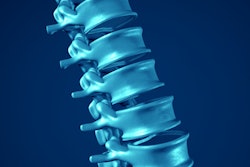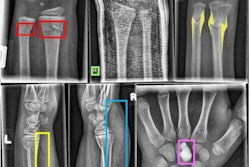
Wrist and vertebral fractures are most prevalent in women who have received endocrine therapy for invasive breast cancer, according to research published November 17 in JAMA Network Open.
A team led by Dr. Joan Lo from Kaiser Permanente Northern California highlighted fracture characteristics in their study of over 5,000 women. The study also included clinically diagnosed hip and humerus fractures.
"Overall, these data support clinicopathologic adjudication of high-risk vertebral fractures and differentiation of prevalent vertebral fractures in studies of women with breast cancer," Lo and colleagues wrote.
Breast cancer is associated with substantial morbidity, including increased fracture risk attributed in part to estrogen deficiency, aromatase inhibitors, frailty, and skeletal metastases. While these fractures have been examined before, past studies often lack detail regarding cancer-related features, researchers said.
Therefore, Lo et al wanted to look at the extent to which pathologic fractures are associated with major osteoporotic fracture events in women with invasive breast cancer who received endocrine therapy.
The team looked at data from the Pathways study, conducted between 2005 and 2013 that enrolled women with newly diagnosed invasive breast cancer. They also looked at data from the Research Program on Genes, Environment, and Health studies conducted between 1996 and 2014. From these separate studies, 5,010 women who underwent endocrine therapy with an average age of 60.2 years were identified.
ICD-9 diagnosis codes, as well as radiology and clinical reports, were used to identify fractures for the wrist, vertebral, humerus, and hip areas.
Non-Hispanic white women made up the majority of the total at 3,672, followed by 543 Asian women, 473 Hispanic women, 244 Black women, and 78 women of either other or unknown ethnicity. Most of the women were at stage I or stage II at initial diagnosis at 4,542.
Of the total, 340 women had incident fractures during follow-up, including 137 wrist fractures, 104 vertebral, 78 humerus, and 46 hip. These excluded prevalent fractures, which accounted for 46 of 150 identified vertebral fractures.
Among women with hip fractures, 20 were aged 80 years or older, compared with 23 women of that age range with vertebral, 15 with humerus, and 21 with wrist fractures (p < 0.01).
Pathologic fractures accounted for 22 of 104 of incident vertebral fractures and fewer than five of 46 of incident hip fractures. Few humerus and wrist fractures were pathologic, the researchers found.
By tumor stage, 15 of 87 vertebral fractures in women with initial stage I and stage II breast cancer were pathologic compared to seven of 17 such fractures for stage III to stage IV breast cancer (p < 0.05).
The incidence of nonpathologic fracture was highest for the wrist at 136, followed by 82 for vertebral, 75 for humerus, and 42 for hip fractures.
The researchers said this information can help clinicians determine which women benefit from aggressive osteoporotic fracture prevention care.
"Overall, these data support clinicopathologic adjudication of high-risk vertebral fractures and differentiation of prevalent vertebral fractures in studies of women with breast cancer," the study authors wrote.




















